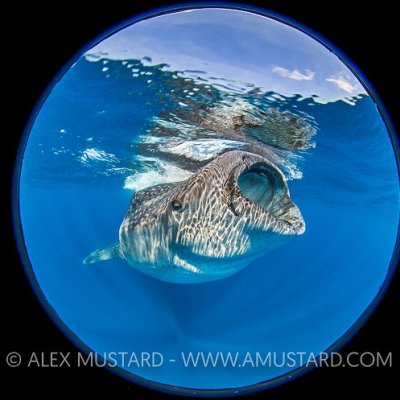
Domain: Eukarya
Kingdom: Animalia
Phylum: Chordata
Class: Chrondrichthyes
Order: Orectolobiformes
Family: Rhincodontidae
Genius: Rhincodon
Species: Typus
A good friend of mine from college is a huge shark enthusiast. She could tell you all sorts of facts about sharks and I’d always go to her if I was having a hard time learning various tidbits about them for class. So I hope I do the whale shark justice today, or else I’m sure I’ll get a playful smack for it later!
Whale sharks (Rhinocodon typus) are pretty cool because they’re the largest shark that lives today, which makes them the largest fish too. Sharks belong to the class of cartilaginous fish with skates and rays—yes, skates and rays are considered fish too. Whale sharks grow up to 65 ft long and are typically the size of a school bus. Their mouths are large enough to fit a person inside comfortably, but don’t worry. We’re safe from these gentle giants because they’re filter feeders! That’s right, these behemoths feed on some of the smallest organisms on the food web—plankton and small fish. But how do they get enough food to support their size?
While they cruise around the tropical waters of the oceans they open their large mouths, suck in a lot of water, and push it out over their gills where the food gets stuck on gill rakers. The food sits on the bony projections until it’s later swallowed. Other than their size, you can also identify these guys by the long ridges that run down their bodies and their spot covered skin. In fact, each Rhincodon typus has a unique pattern of white spots that allows scientists to identify different individuals.
Here’s another neat fact about whale sharks. Whale shark mothers carry their fertilized eggs inside themselves and those eggs will hatch inside her, allowing her to give birth to live young. Cool, right? Sharks have a lot of weird birthing processes that I’ll eventually cover, but this process is called ovoviviparous—that’s a mouthful!
I hope I’ve gotten you interested in whale sharks with this piece. I saw my first one a few years ago at the Georgia Aquarium in Atlanta, Georgia. I didn’t know what to expect but it was like love at first sight. They were these big goofy sharks gliding around the large tank, occasionally opening their mouths as they went. They were really peaceful to watch and that’s what I did for hours, letting the people around me melt away as I watched the whale sharks move about and the manta rays danced around them.
It’s sad to know that whale shark populations are declining, even though they’re protected in some countries. Their meat and fins are highly sought after for shark fin soup, and they are hunted in unsustainable numbers. Don’t get me started on the dish, not yet. When you get the chance, take the time to watch these gentle giants and get lost in their goofy majesty.
Sources and cool links:
Ocean: The Definitive Visual Guide made by the American Museum of Natural History
https://www.nationalgeographic.com/animals/fish/w/whale-shark/
https://www.sharksinfo.com/ovoviviparity.html
https://www.georgiaaquarium.org/?rebound=1

